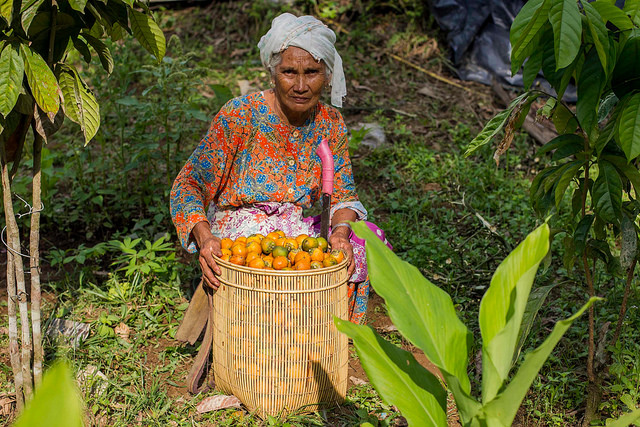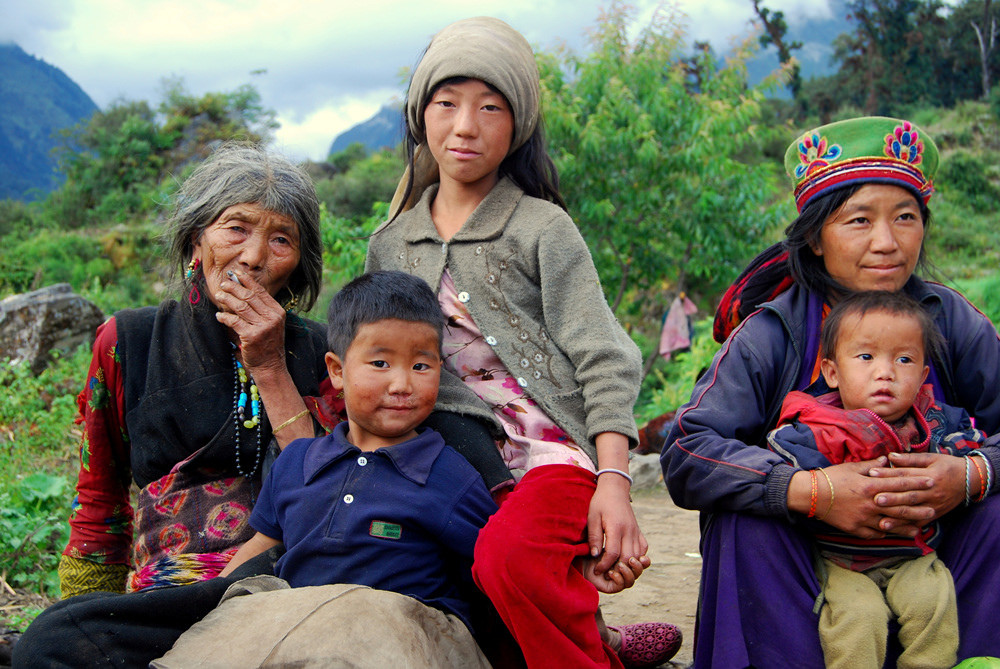53-year-old Adham* lives in the steep-sided Vanj valley in the Pamir mountains of eastern Tajikistan. The hillsides are parched and dusty, but each spring glacier-melt brightens the valley floor with agricultural green.
Typically, that has meant subsistence potato and wheat crops, but that is changing. Each year, Adham adds a new row of fruit trees to his orchard – part of a growing trend in the rural Central Asian country toward investing in trees.
Like most families in Tajikistan, Adham’s is far-flung. One of his sons has been conscripted into the army; the other has joined millions of other young Tajik men working in Russia. The money he sends back helps to pay for the saplings.
“Trees are a long-term investment,” Adham told anthropologist Igor Rubinov, who lived with him for months while doing fieldwork in the valley. “You have to take care of them like your children.”
The comment resonated with Rubinov, who is the author of a new Center for International Forestry Research (CIFOR) occasional paper about the link between migration and forests in Tajikistan.
“When he said that, I knew that his actual children were gone. So for me, it highlighted the fact that when you’ve got so much migration going on, you need to stabilize where you are,” he says. “Trees were really helping Adham do that, and he was obviously very proud of them.”
The collapse of the Soviet Union and a subsequent five-year civil war thrust Tajikistan into poverty. Power and heating were hard to come by, so rural communities cut down trees for firewood. “People needed to make bread and keep warm in the cold winters, so they fell on the forest resources pretty heavily,” says Rubinov.
A LAND OF MIGRANTS
In the years since, the country has relied on subsistence agriculture – and migration, mainly to Russia.
Tajikistan is renowned as the world’s most remittance-dependent country. In 2014, money transfers home from migrants made up a staggering 50 percent of the country’s GDP, though the figure has since fallen to 36.6 percent as a result of Russia’s financial downturn and a tightening of the visa rules.
“You can go to every single family and ask: How many migrants do you have? Is it just one or is it four?”, says Rubinov.
That makes the country an ideal place to study the effects of migration on land use, says Habtemariam Kassa, who is leading a new CIFOR research project that aims to do just that. It will compare cases across Indonesia, Peru and Tajikistan.
“While it’s true that Tajikistan doesn’t have many trees or forest resources, the few trees that they have are very important in the context of rural livelihoods,” Kassa says.
Starting in the middle of 2017, CIFOR researchers will interview people at two Tajik research sites – one in the Pamir Mountains and the other in the country’s west, in Penjikent area close to the Uzbek border – to learn more about the dynamics of migration.
“We will ask: Who is migrating? For how long? How much money do they send back or bring with them when they return? What are they investing it in? To what extent is tree planting part of their strategy?” says Kassa.
SOCIOECONOMIC IMPLICATIONS
Migration is very gendered in Tajikistan – it’s been almost entirely only men that go, but this is now changing – so gender will be an important element of the study.
“We hope to be able to draw some conclusions across the countries, and find commonalities or differences that may help us to better understand what is going on. My hope is there will be some useful findings that will make their way into policy decisions in Tajikistan, and help people to use natural resources more sustainably,” says Kassa.
While full results are not expected until 2018, Rubinov’s occasional paper provides an overview of the context, and offers some preliminary findings.
Recent land tenure reforms have given people a greater sense of security about their properties, he says.
“Now people are starting to think: I know I’m going to have this land for my lifetime and for my kids’ generation, so how can I improve it? Migrants are coming home and thinking: How am I going to stabilize myself in the long run? For many, trees have become one of their strategies.”
With a small amount of savings, they can buy saplings, which can help to diversify their livelihoods and potentially increase income in the long term.
In addition to fruit trees, Rubinov noticed that people were planting woodlots near their villages to provide a cheap, renewable source of timber and fuel for cooking and heating.
They’re not experts at silviculture, says Rubinov, so there is a need for technical support to help people get the most out of their trees.
Little by little, in an organic, ad hoc way, migrants are helping to increase the tree cover in Tajikistan. But it’s not all good news, says Rubinov. Tajikistan’s remaining wild alpine juniper forests are suffering under the strain of grazing animals and firewood harvesting.
“People are not necessarily the saviors of the few wilderness forests that still exist,” he says. “Instead we are seeing an expansion of forests around settlements in the river bottoms, and our hope is that if you expand those areas enough, then you can take pressure away from the high mountain forests.”
“There’s an ongoing debate asking whether people are good or bad for the environment, whether they are the saviors or the destroyers of the forest. In Tajikistan, you can see very clearly that the dynamic actually goes both ways.”
* Names have been changed
Cover photo: ‘Pamirian views’ by S. Nazari
We want you to share Forests News content, which is licensed under Creative Commons Attribution-NonCommercial-ShareAlike 4.0 International (CC BY-NC-SA 4.0). This means you are free to redistribute our material for non-commercial purposes. All we ask is that you give Forests News appropriate credit and link to the original Forests News content, indicate if changes were made, and distribute your contributions under the same Creative Commons license. You must notify Forests News if you repost, reprint or reuse our materials by contacting forestsnews@cifor-icraf.org.

